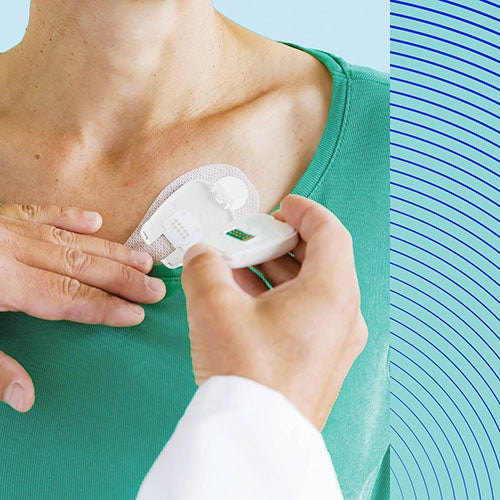Success Stories
Polestar Takes Advantage of Flexcon's Toll Coating Capabilities
Collaboration Brings New CO2 Sensor Technology to Market

The Challenge
The technology Polestar had developed is a liquid sensory composite which must be coated onto a pressure-sensitive film. The film is then installed in mixed gas rebreathers on scuba diving tanks. The final product is a quarter-sized disc of polymer film that changes from blue to yellow in a reversible and predictable way when exposed to CO2. A white LED light illuminates the disc from a sealed pot below that houses the electronics. Then a digital meter reads the color, which is converted to the CO2 level. The sensor notifies scuba divers when their oxygen supply is getting low so that they can safely make their way back to the surface before running out of air.
The Process
Over the next 12-18 months, Polestar and Flexcon engaged in a repetitive trial process to create a feedback and feasibility loop. There were numerous restrictions on how the material could be processed to ensure its effectiveness and protect against premature activation of the sensing material through environmental exposure. The process enabled engineers to hone the product to its final form and successfully produce it on a manufacturing scale.
The Result
“Flexcon made it easy to take an idea from concept to reality,” says Jim Biagioni, COO at Polestar. “The team worked with us every step of the way to translate our technology from a lab scale to a repeatable, manufacturing process. Flexcon developed a custom solution for us to use in our product development that solves a real need for our customer base.”
“At Flexcon, we like to think of our partners as the brains and Flexcon as the brawn,” says Shaun McDonough, Executive V.P. of Purpose, People and Process. “They come up with all the cool concepts, and then collaborate with us to use our machines in a continual iterative process that allows those concepts to go from experiment to commercial reality.”
Polestar’s primary target at the moment is both recreational and commercial divers; however, their new sensors have potential applications anywhere a sensor for CO2 is needed, such as first responder and firefighting equipment. The sensor project is a great example of collaboration between Flexcon and a technology partner on a concept and then working together to ramp up manufacturing.
Regardless of the size or the turnaround time for sales, at Flexcon we relish the chance to work with creative engineering minds and to find solutions to their challenges. Our work just doesn’t get more satisfying than that.

